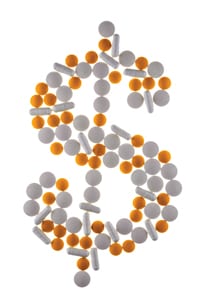Fielding Important Questions – When Playing School Sports, There Is Always a Risk of Injury
Q. My son wants to participate in team sports when he attends middle school. I’ve read about the fact that some schools don’t employ trainers. Should I be worried?
A. This is an excellent question. In the ideal world, we would like to have athletic trainers at all recreational sporting events. This question has multiple ramifications beyond sports medicine, thus I will limit the answer to my expertise area.
Most likely there is no reason to be worried. Middle schools should have specific guidelines in which coaches, teachers, and nursing staff will refer the athletes for further evaluations. It’s important to speak with your child’s school and coaching staff about what precautions and training they have. Also, having a primary care provider and trustworthy sports medicine specialist in your contact list may be a good idea.
At Baystate Health, we treat all sports and exercise related injuries, including sports concussions, in our Springfield and East Longmeadow locations. We have a seasoned network of specialist in fields including sports medicine, physical therapy, occupational therapy, neuropsychology, neurology, and several other specialists/advanced providers.
Q. Will he need a physical?
A. The American College of Sports Medicine, as well as most athletic organizing bodies, requires a recent physical examination — either from your son’s pediatrician or even a local sports medicine specialist — prior to sports/athletic participation.
Q. I’ve heard about youngsters having physicals, but then having heart trouble when playing sports. Should I consider a special test for him?
A. Most athletes can participate in sports without fear of heart problems. That is why a physical examination prior to sports/athletic participation is enforced. The current athletic guidelines recommend pre-participation cardiac evaluations for athletes with a history of cardiac anomalies, chest pain or near-fainting during exercise.
Also, athletes with close family members that suffered sudden death under the age of 50 will require more-advanced screening. However, standard testing to look for heart problems in every single athlete would be very costly, and invariably would limit participation of athletes who are safe to participate in sports.
To avoid any heart issues, it is also important to look at other risk factors. Athletes should not wait until they are thirsty to drink fluids, and should be well hydrated while participating in sports. I usually recommend two glasses of water prior to participating in sports, followed by one glass of water every 15 minutes. I usually recommend sports drinks for events lasting more than one hour, otherwise, water is enough.
For some with kidney or endocrine problems, however, their fluid intake may need to be limited. We also advise against participation in outdoor activities when it is too hot and humid. Some organizations use a tool called the “heat index” to determine if it is safe to play sports outdoors.
If it is hot outside and an athlete has a near-fainting or fainting episode, it may be a good idea for a coach to end the practice session or be on the lookout for other possible fainting events. We call this the “weak link phenomenon.”
Everyone may be at risk of having a heat exhaustion event on that very hot day, but the “weak link” is affected first. The athlete with a fainting episode should be placed in a cool area in the shade, and rehydrated by drinking small amounts of fluids very slowly. Body temperature should be monitored closely. If the person is unconscious or has high skin temperature – when the skin is red and is not sweating – intravenous (IV) fluids are needed, and he or she should be immediately brought to an urgent care facility or emergency room.
Q. What are the most common sports injuries in high school sports? My son is particularly interested in football and basketball, but may participate in others like track.
A. The most common injuries we see in football include shoulder or AC joint separation, ligament injuries at the knee, hamstrings pulls, and back injuries. Another relatively common injury, especially associated with football, but also seen in other sports, is concussions.
During basketball, ankle sprains, jumper’s knee (also known as patellar tendinitis) and finger sprains are common. Participants in football and basketball may also have an increased risk of anterior cruciate ligament (ACL) tears. Although Tom Brady, popular quarterback for the New England Patriots, had one of these injuries when he was tackled several years ago, most ACL injuries are not related to a direct hit, but to sudden changes in direction with the knee extended. A sports injury does not necessarily mean the end of one’s sports career, as evidenced by Brady, who returned to his full potential after the injury.
Q. If my son is injured, how likely is it he will recover and what therapies are available?
A. Fortunately, for your son and other players, most sports injuries (about 90{06cf2b9696b159f874511d23dbc893eb1ac83014175ed30550cfff22781411e5} of them) will not require surgery. But the practice of playing sports with an injury may delay or prevent full healing and prevent the athlete from a pain-free, fun sports experience. Early recognition of an injury will help athletes like your son to heal completely at a quicker rate. Athletes, parents, and coaches should be able to identify and seek early medical assistance in case of injury.
Sometimes athletes are hurt and they don’t want to admit it. However, a parent or coach should notice if the athlete is limping, not running as fast, or not performing as usual. Many have heard the often-used saying ‘no pain, no gain’ to justify playing with pain. Any active athlete should know the difference from the pain felt after a good exercise session — often referred to as “muscle fever” — compared to the pain felt when a true injury has been sustained. It is my belief that the ‘no pain, no gain’ saying refers only to ‘muscle fever’ and not injury pain.
Q. I hear a lot in the news about concussions. My husband sustained a concussion years ago when playing high school football. Should I be concerned for him?
A. Sports concussions can be quite serious, especially if someone continues playing with a concussion and then endures another. Concussions have been associated with very serious problems, such as chronic headaches, depression, and early brain atrophy. The risk for these more serious problems appears higher for athletes who have had several concussions or for those who have played for years having concussions over-and-over again. However, as sports medicine professionals, at this moment we really don’t know how many concussions are too many.
If your husband has no symptoms after his concussions — including sleep problems, frequent headaches, mood problems (depression, anxiety), and/or concentration or memory problems — most likely there is no reason to be concerned for him. However, as we grow old, we may develop difficulty sleeping and forget where our keys are. This does not necessarily relate to a past concussion. But, if your husband suffers from two or more of those symptoms, it may be a good idea for him to talk with his primary care provider.
Q. Injury-wise, are there some sports that are safer than others that I should steer my son toward?
A. All sports have a higher risk of injury compared to regular exercise, becuause we are pushing our bodies to the limit. To decrease the risk of injury, I always say we ‘should be fit to play sports, not play sports to be fit.’ As a sports physician and a former athlete, the values of sports participation, including general health gains, self-esteem, learning team work, resilience, motivation, stress management, and even the possibility of obtaining a scholarship to study in college, outweighs the risk of injury.
Q. How protected are kids today when playing school sports? Are there things I should look for and make sure that are employed on the field by the school?
A. Our children are much safer playing school sports today compared to when I was in school. Rules established by sports, school, and athletic organizing bodies have evolved over the years, making sports much safer. Most injuries are related to training errors or bad equipment or the field or court. The sports area should be prepped accordingly and free of obstacles, unless these obstacles are used as part of the practice. Equipment should be inspected yearly and fitted to the athlete. All padding, straps, and laces should be in good shape.
Keep in mind that the school or coach does not assume our own parenting responsibilities. Changes in behavior, such as not wanting to go to practice, may be a sign that a young athlete is injured or being bullied during practice. It could also be a reflection of their participation in a sport that you like and pushed them toward, instead of one they preferred to play.
Signs of a true injury include poorer performance in play than usual, limping, swelling, or redness in a joint. It’s also important to remember when athletes are not eating or sleeping enough, it may affect their sports performance or even be a reflection of too much training, which we refer to as “overtraining syndrome.”
Dr. Julio A. Martínez-Silvestrini is medical director of Baystate Physical Medicine and Rehabilitation at Baystate Medical Center.




Comments are closed.